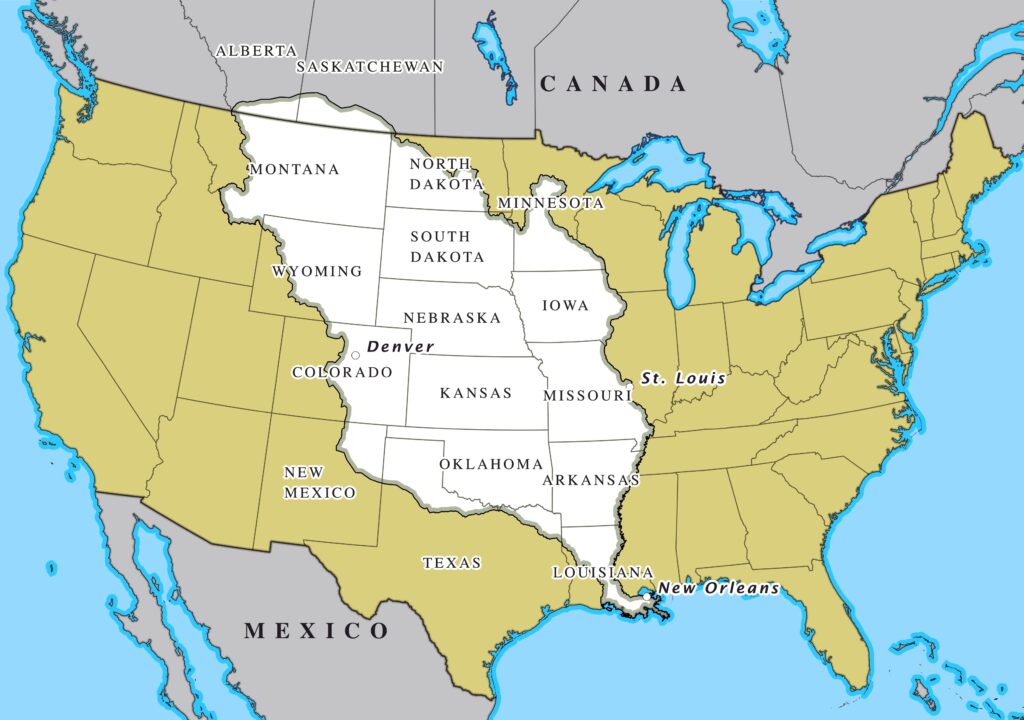
The transfer of territory has often been a catalyst for significant geopolitical changes. One such pivotal moment occurred in 1800 when Spain ceded the vast expanse of Louisiana to France through the Treaty of San Ildefonso. Little did they know that this seemingly obscure agreement would lay the groundwork for one of the most momentous land acquisitions in history—the Louisiana Purchase by the United States. In this article, we’ll delve into the circumstances surrounding Spain’s cession of Louisiana to France, its implications, and the chain of events that ultimately led to the United States doubling its territory.
The Louisiana Territory: A Prize Worth Pursuing
At the turn of the 19th century, the Louisiana Territory was a coveted region. Stretching from the Mississippi River to the Rocky Mountains and from the Gulf of Mexico to the Canadian border, it boasted fertile lands, thriving trade routes, and the crucial port city of New Orleans. Control over this vast territory held strategic importance for any nation aspiring to expand its influence in North America.
Spain’s Cession to France: The Treaty of San Ildefonso
In 1800, Spain, under the rule of King Charles IV, entered into the secret Treaty of San Ildefonso with France, led by Napoleon Bonaparte. This treaty involved the retrocession of Louisiana from Spain to France. The reasons behind this transfer were multifaceted. Napoleon saw Louisiana as a valuable asset for his ambitions in the New World, but it was also a way to compensate France for the loss of a key Caribbean colony, Santo Domingo (present-day Haiti), which had revolted and gained its independence.
The American Reaction: Concern and Negotiation
News of the Treaty of San Ildefonso reached the United States, then under the leadership of President Thomas Jefferson. The potential of a powerful France controlling the vital port of New Orleans and the entire Louisiana Territory alarmed American leaders. Access to the Mississippi River for trade was crucial to the young nation’s westward expansion, and the thought of French control threatened this lifeline.
The Louisiana Purchase: A Fortuitous Opportunity
Amidst this geopolitical uncertainty, an opportunity presented itself. In 1803, France, facing financial difficulties and military conflicts in Europe, offered to sell the entire Louisiana Territory to the United States. President Jefferson seized this golden opportunity, and after negotiation, the United States acquired the Louisiana Territory for $15 million, doubling the size of the nation.
Legacy and Impact: The United States Expands Westward
The Louisiana Purchase had profound and far-reaching consequences. It not only secured American control over the Mississippi River and New Orleans but also paved the way for westward expansion across the continent. The fertile lands of the Louisiana Territory fueled westward migration and economic growth, transforming the United States into an expansive nation.
Conclusion: A Twist of Fate That Shaped a Nation
The cession of Louisiana from Spain to France in 1800, followed by its sale to the United States, was a twist of fate that reshaped the course of American history. The Louisiana Purchase, born out of these diplomatic maneuvers, transformed the United States into a continental power and set the stage for its westward expansion and manifest destiny. It stands as a testament to the profound impact that international agreements and territorial transfers can have on the destiny of nations.
